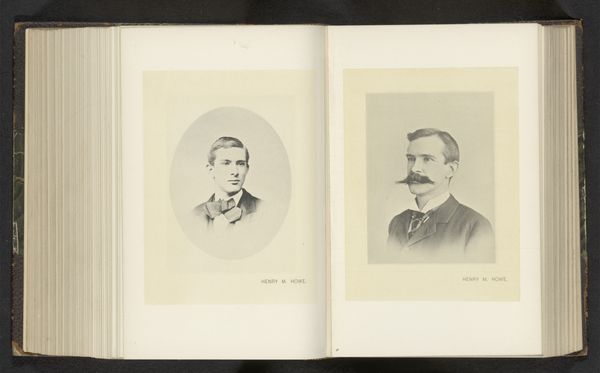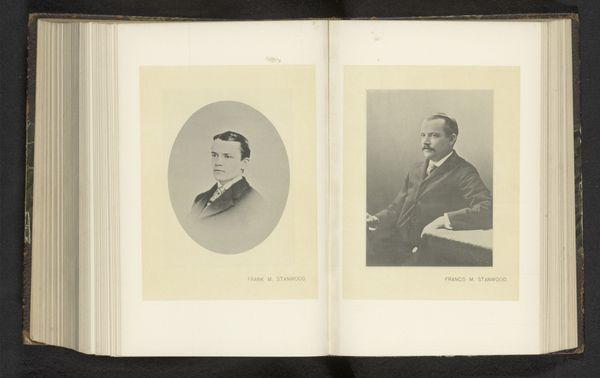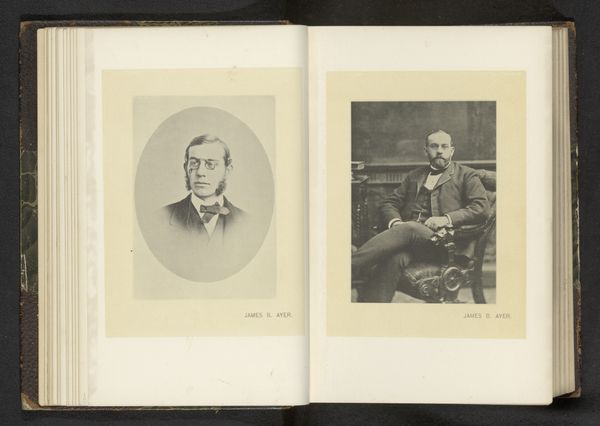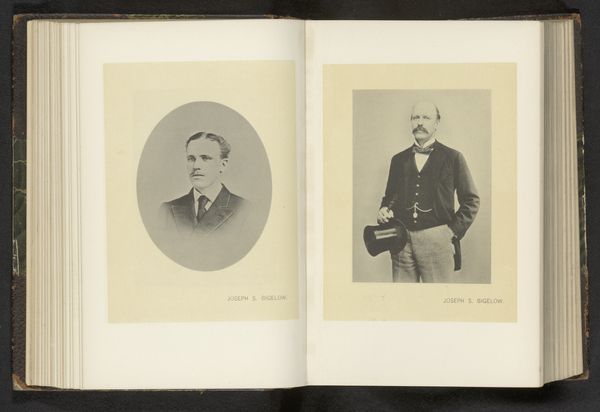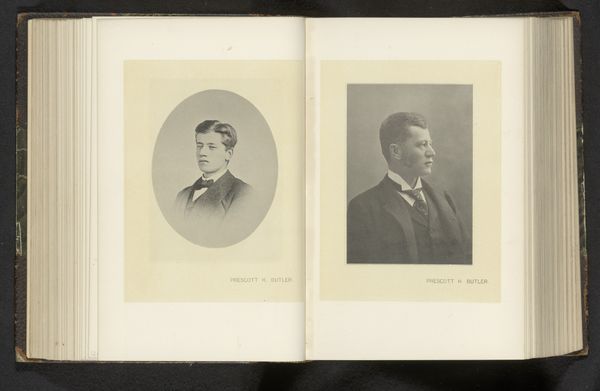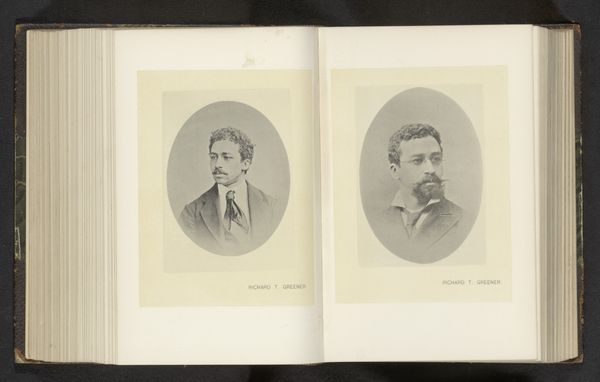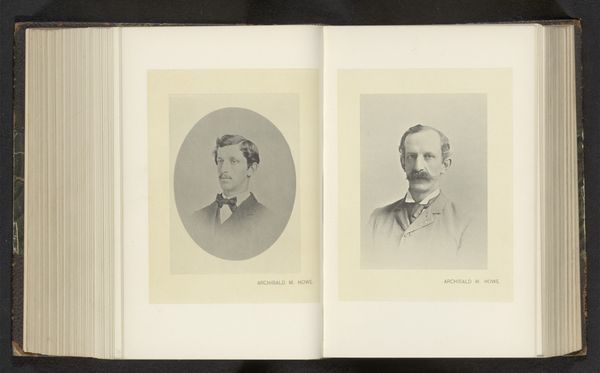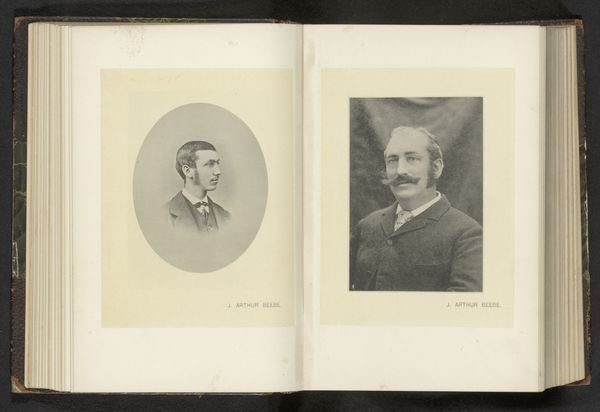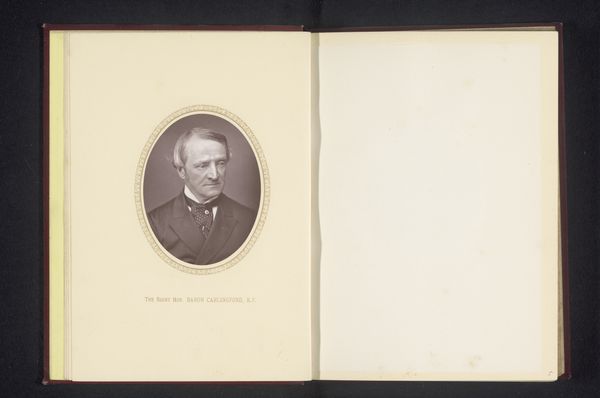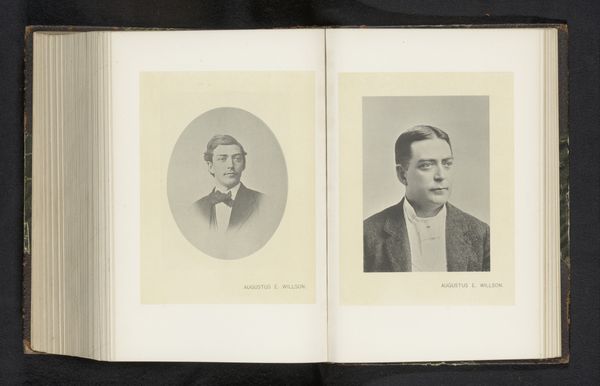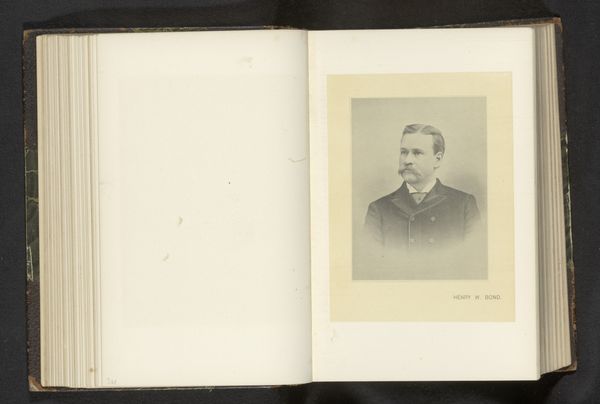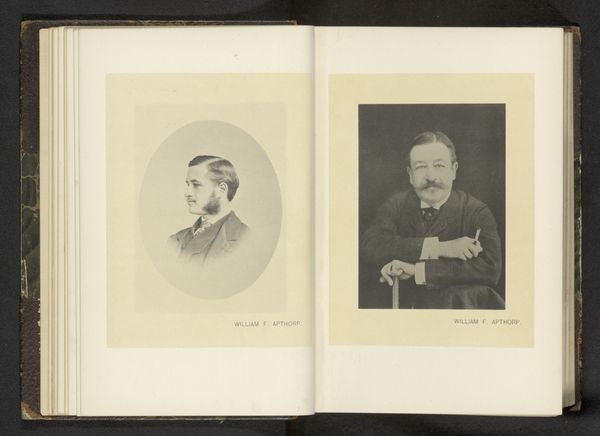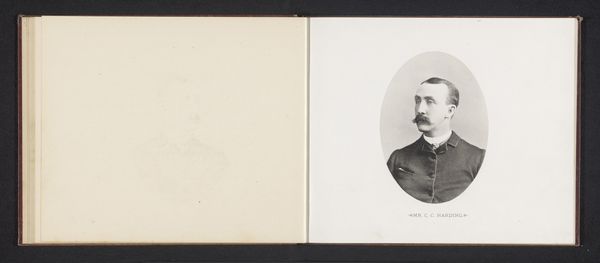
print, photography, albumen-print
#
portrait
# print
#
photography
#
albumen-print
Dimensions: height 117 mm, width 83 mm
Copyright: Rijks Museum: Open Domain
Editor: Here we have an intriguing set of albumen prints titled "W. Everett Cutter," dating back to before 1894. It almost looks like two photographs of the same person at different ages, laid out side by side. What do you make of this piece? Curator: This album presents a fascinating study in photographic production. Think about the materiality of albumen prints, the specific chemical processes, the labor involved in preparing the glass plates, sensitizing them, exposing them, developing, and then printing. This wasn’t just about capturing an image, but a whole production chain reliant on skilled workers and access to resources. Editor: So, it's less about the subject and more about the how it was made? Curator: Not exclusively, but consider what an albumen print signified. These images were meticulously crafted and meant to last. Someone paid for this service; it wasn't cheap. Photography at this time involved a social transaction of access and means. Two prints of the same individual suggests wealth. But I wonder about its mass distribution, how available this image of Cutter actually was? Was this an anomaly or indicative of something much broader in Cutter's era? Editor: That is so interesting. I hadn’t considered that. The images feel so personal, but really it speaks to this larger economic picture and access to certain materials. Curator: Exactly! The “portrait” style itself is interesting as it places photography in conversation with older means of image production and value. Editor: I never thought about photography in those terms. I usually think of the end result as an objective capture of reality. Curator: Seeing photography through a material lens forces us to challenge assumptions. What is hidden in plain sight if you unpack the construction of a cultural artefact. Editor: I guess there is much to read between the lines. Thanks for that!
Comments
No comments
Be the first to comment and join the conversation on the ultimate creative platform.
